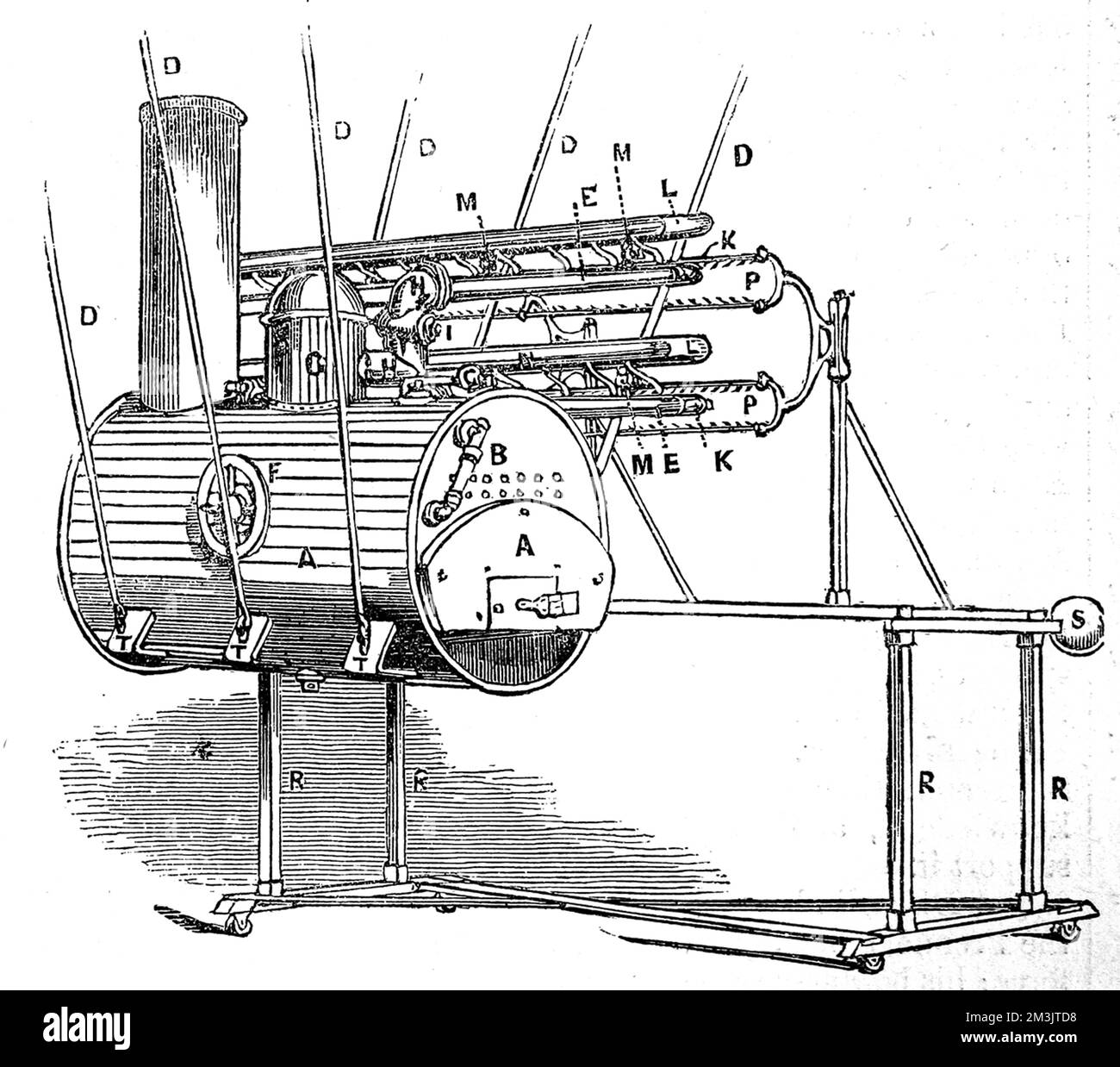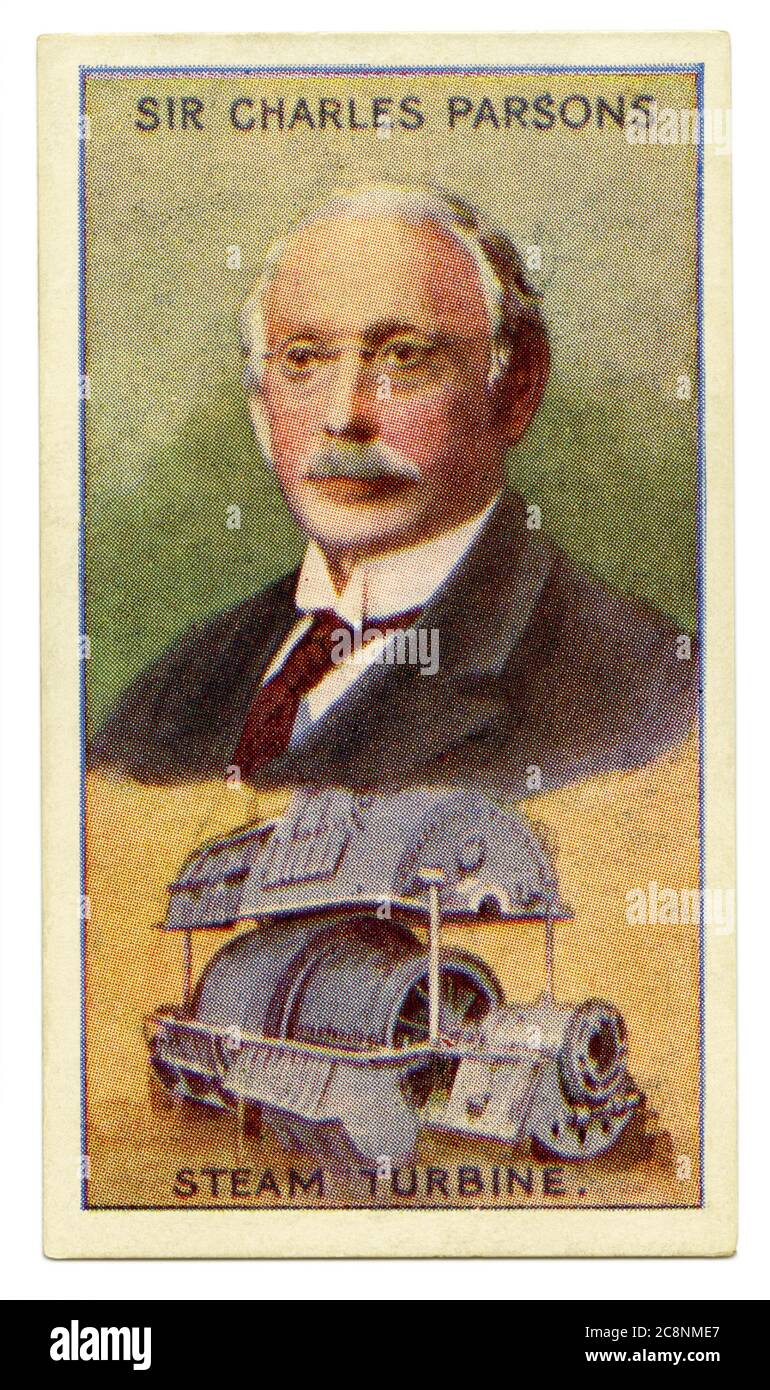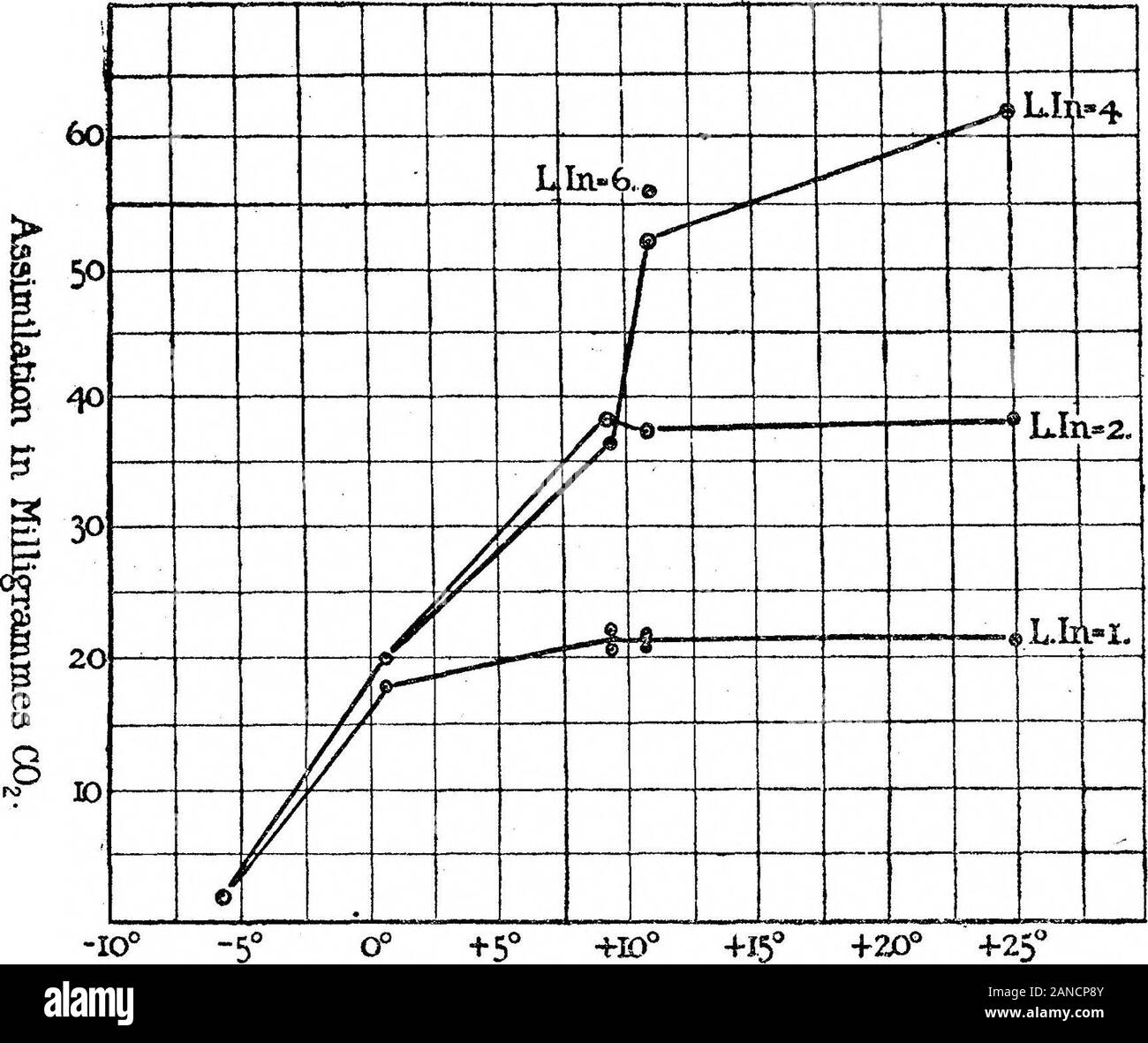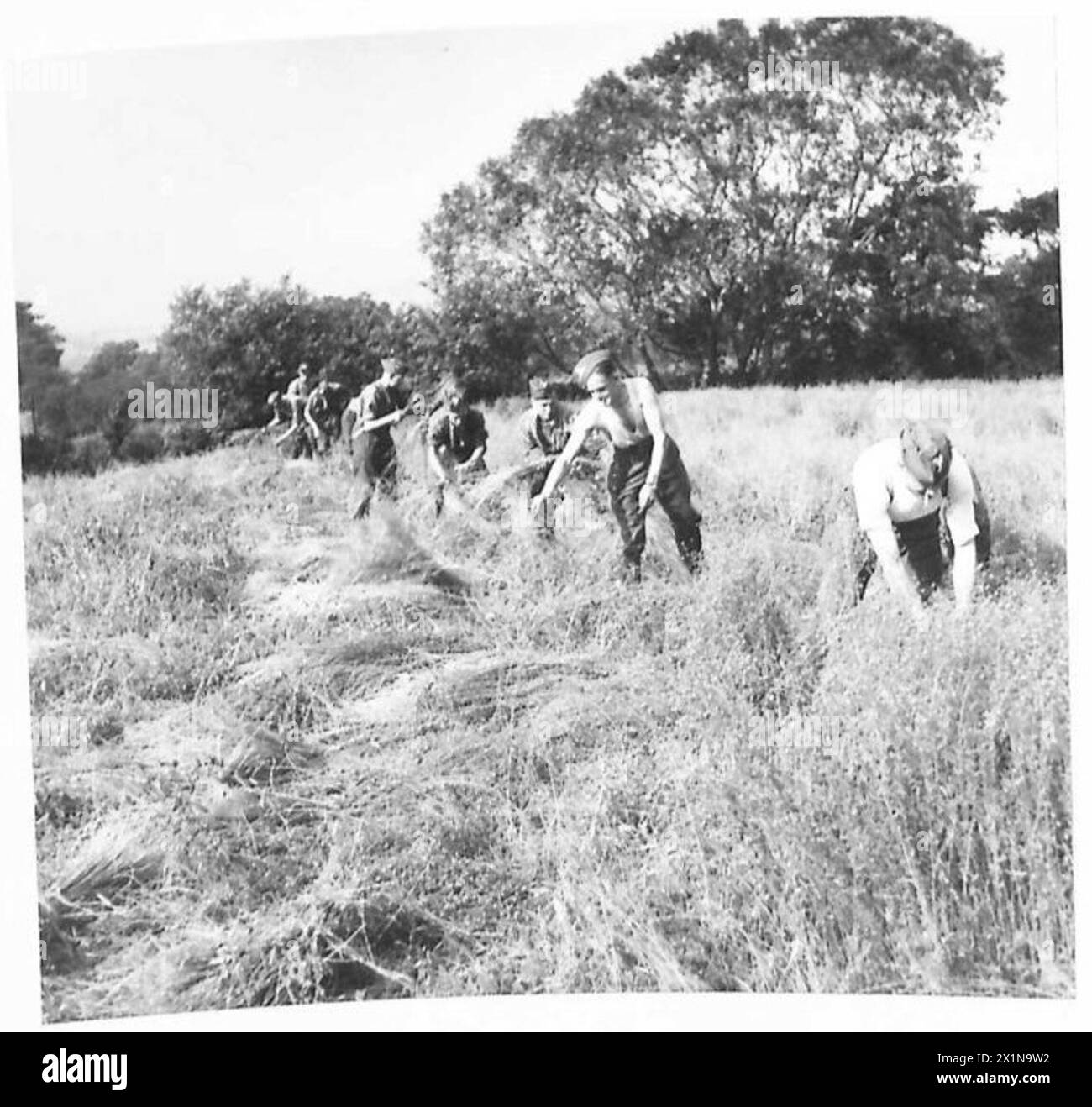Utilised Cut Out Stock Images
 A winter cap utilised as a protective panzer cap maker Lubstein, Berlin 'Erel Sonderklasse' historic, historical, army, armies, armed forces, military, militaria, object, objects, stills, clipping, clippings, cut out, cut-out, cut-outs, 20th century, Editorial-Use-Only Stock Photohttps://www.alamy.com/image-license-details/?v=1https://www.alamy.com/a-winter-cap-utilised-as-a-protective-panzer-cap-maker-lubstein-berlin-erel-sonderklasse-historic-historical-army-armies-armed-forces-military-militaria-object-objects-stills-clipping-clippings-cut-out-cut-out-cut-outs-20th-century-editorial-use-only-image247011997.html
A winter cap utilised as a protective panzer cap maker Lubstein, Berlin 'Erel Sonderklasse' historic, historical, army, armies, armed forces, military, militaria, object, objects, stills, clipping, clippings, cut out, cut-out, cut-outs, 20th century, Editorial-Use-Only Stock Photohttps://www.alamy.com/image-license-details/?v=1https://www.alamy.com/a-winter-cap-utilised-as-a-protective-panzer-cap-maker-lubstein-berlin-erel-sonderklasse-historic-historical-army-armies-armed-forces-military-militaria-object-objects-stills-clipping-clippings-cut-out-cut-out-cut-outs-20th-century-editorial-use-only-image247011997.htmlRMT9TA91–A winter cap utilised as a protective panzer cap maker Lubstein, Berlin 'Erel Sonderklasse' historic, historical, army, armies, armed forces, military, militaria, object, objects, stills, clipping, clippings, cut out, cut-out, cut-outs, 20th century, Editorial-Use-Only
 Hydro-electric machine invented by William George Armstrong (1810-1900), later Baron Armstrong of Bamburgh and Cragside, in the 1840's. Originally training as a solicitor, Armstrong was fascinated by mechanics and demonstrated this particular machine at the Literary and Philosophical Society of Newcastle-upon-Tyne to an audience which included famous engineers such as Faraday and Whitworth. The invention utilised high pressure steam issuing through nozzles in the boiler. 1845 Stock Photohttps://www.alamy.com/image-license-details/?v=1https://www.alamy.com/hydro-electric-machine-invented-by-william-george-armstrong-1810-1900-later-baron-armstrong-of-bamburgh-and-cragside-in-the-1840s-originally-training-as-a-solicitor-armstrong-was-fascinated-by-mechanics-and-demonstrated-this-particular-machine-at-the-literary-and-philosophical-society-of-newcastle-upon-tyne-to-an-audience-which-included-famous-engineers-such-as-faraday-and-whitworth-the-invention-utilised-high-pressure-steam-issuing-through-nozzles-in-the-boiler-1845-image501358964.html
Hydro-electric machine invented by William George Armstrong (1810-1900), later Baron Armstrong of Bamburgh and Cragside, in the 1840's. Originally training as a solicitor, Armstrong was fascinated by mechanics and demonstrated this particular machine at the Literary and Philosophical Society of Newcastle-upon-Tyne to an audience which included famous engineers such as Faraday and Whitworth. The invention utilised high pressure steam issuing through nozzles in the boiler. 1845 Stock Photohttps://www.alamy.com/image-license-details/?v=1https://www.alamy.com/hydro-electric-machine-invented-by-william-george-armstrong-1810-1900-later-baron-armstrong-of-bamburgh-and-cragside-in-the-1840s-originally-training-as-a-solicitor-armstrong-was-fascinated-by-mechanics-and-demonstrated-this-particular-machine-at-the-literary-and-philosophical-society-of-newcastle-upon-tyne-to-an-audience-which-included-famous-engineers-such-as-faraday-and-whitworth-the-invention-utilised-high-pressure-steam-issuing-through-nozzles-in-the-boiler-1845-image501358964.htmlRM2M3JTD8–Hydro-electric machine invented by William George Armstrong (1810-1900), later Baron Armstrong of Bamburgh and Cragside, in the 1840's. Originally training as a solicitor, Armstrong was fascinated by mechanics and demonstrated this particular machine at the Literary and Philosophical Society of Newcastle-upon-Tyne to an audience which included famous engineers such as Faraday and Whitworth. The invention utilised high pressure steam issuing through nozzles in the boiler. 1845
 Medieval otter hunting in England was formerly a sport of watermen, sine the otter is inedible. It consisted of the hunters searching the river bank until their quarry was seen. Hunting dog were utilised in the chase and the otter was either killed by them or despatched by a hunter on the river bank. Stock Photohttps://www.alamy.com/image-license-details/?v=1https://www.alamy.com/medieval-otter-hunting-in-england-was-formerly-a-sport-of-watermen-sine-the-otter-is-inedible-it-consisted-of-the-hunters-searching-the-river-bank-until-their-quarry-was-seen-hunting-dog-were-utilised-in-the-chase-and-the-otter-was-either-killed-by-them-or-despatched-by-a-hunter-on-the-river-bank-image223798238.html
Medieval otter hunting in England was formerly a sport of watermen, sine the otter is inedible. It consisted of the hunters searching the river bank until their quarry was seen. Hunting dog were utilised in the chase and the otter was either killed by them or despatched by a hunter on the river bank. Stock Photohttps://www.alamy.com/image-license-details/?v=1https://www.alamy.com/medieval-otter-hunting-in-england-was-formerly-a-sport-of-watermen-sine-the-otter-is-inedible-it-consisted-of-the-hunters-searching-the-river-bank-until-their-quarry-was-seen-hunting-dog-were-utilised-in-the-chase-and-the-otter-was-either-killed-by-them-or-despatched-by-a-hunter-on-the-river-bank-image223798238.htmlRMR02TX6–Medieval otter hunting in England was formerly a sport of watermen, sine the otter is inedible. It consisted of the hunters searching the river bank until their quarry was seen. Hunting dog were utilised in the chase and the otter was either killed by them or despatched by a hunter on the river bank.
 An old cigarette card (c. 1929) with a portrait of Hon. Sir Charles Algernon Parsons, OM, KCB, FRS (1854–1931) and an illustration of his steam turbine. Parsons was an Anglo-Irish engineer, best known for his invention of the compound steam turbine. In 1884 Parsons was head of electrical equipment development at Clarke, Chapman and Co, ship engine manufacturers near Newcastle. He developed a turbine engine there in 1884 and utilised it to drive an electrical generator. Parsons' steam turbine made cheap electricity possible and revolutionised marine transport. Stock Photohttps://www.alamy.com/image-license-details/?v=1https://www.alamy.com/an-old-cigarette-card-c-1929-with-a-portrait-of-hon-sir-charles-algernon-parsons-om-kcb-frs-18541931-and-an-illustration-of-his-steam-turbine-parsons-was-an-anglo-irish-engineer-best-known-for-his-invention-of-the-compound-steam-turbine-in-1884-parsons-was-head-of-electrical-equipment-development-at-clarke-chapman-and-co-ship-engine-manufacturers-near-newcastle-he-developed-a-turbine-engine-there-in-1884-and-utilised-it-to-drive-an-electrical-generator-parsons-steam-turbine-made-cheap-electricity-possible-and-revolutionised-marine-transport-image366812047.html
An old cigarette card (c. 1929) with a portrait of Hon. Sir Charles Algernon Parsons, OM, KCB, FRS (1854–1931) and an illustration of his steam turbine. Parsons was an Anglo-Irish engineer, best known for his invention of the compound steam turbine. In 1884 Parsons was head of electrical equipment development at Clarke, Chapman and Co, ship engine manufacturers near Newcastle. He developed a turbine engine there in 1884 and utilised it to drive an electrical generator. Parsons' steam turbine made cheap electricity possible and revolutionised marine transport. Stock Photohttps://www.alamy.com/image-license-details/?v=1https://www.alamy.com/an-old-cigarette-card-c-1929-with-a-portrait-of-hon-sir-charles-algernon-parsons-om-kcb-frs-18541931-and-an-illustration-of-his-steam-turbine-parsons-was-an-anglo-irish-engineer-best-known-for-his-invention-of-the-compound-steam-turbine-in-1884-parsons-was-head-of-electrical-equipment-development-at-clarke-chapman-and-co-ship-engine-manufacturers-near-newcastle-he-developed-a-turbine-engine-there-in-1884-and-utilised-it-to-drive-an-electrical-generator-parsons-steam-turbine-made-cheap-electricity-possible-and-revolutionised-marine-transport-image366812047.htmlRM2C8NME7–An old cigarette card (c. 1929) with a portrait of Hon. Sir Charles Algernon Parsons, OM, KCB, FRS (1854–1931) and an illustration of his steam turbine. Parsons was an Anglo-Irish engineer, best known for his invention of the compound steam turbine. In 1884 Parsons was head of electrical equipment development at Clarke, Chapman and Co, ship engine manufacturers near Newcastle. He developed a turbine engine there in 1884 and utilised it to drive an electrical generator. Parsons' steam turbine made cheap electricity possible and revolutionised marine transport.
 OFFICIAL PHOTOGRAPHS TAKEN IN THE WESTERN DESERT - A buried tank utilised as an anti-tank weapon British Army Stock Photohttps://www.alamy.com/image-license-details/?v=1https://www.alamy.com/official-photographs-taken-in-the-western-desert-a-buried-tank-utilised-as-an-anti-tank-weapon-british-army-image603087964.html
OFFICIAL PHOTOGRAPHS TAKEN IN THE WESTERN DESERT - A buried tank utilised as an anti-tank weapon British Army Stock Photohttps://www.alamy.com/image-license-details/?v=1https://www.alamy.com/official-photographs-taken-in-the-western-desert-a-buried-tank-utilised-as-an-anti-tank-weapon-british-army-image603087964.htmlRM2X150RT–OFFICIAL PHOTOGRAPHS TAKEN IN THE WESTERN DESERT - A buried tank utilised as an anti-tank weapon British Army
 Experimental Researches on Vegetable Assimilation and RespirationIIIOn the Effect of Temperature on Carbon-Dioxide Assimilation . of lightrepresented by L.In. = 1 can at the low temperature be utilised. When the intensity is doubled, the assimilation at 0°4 C. is unaltered, but anincrease is produced at the other temperatures, numbers almost identical beingobtained for all of these. When four times the light is used we find a similarphenomenon. The assimilation at 9° C. is no greater than that corresponding totwice the light, for the temperature exerts its limiting effect and the leaf canassim Stock Photohttps://www.alamy.com/image-license-details/?v=1https://www.alamy.com/experimental-researches-on-vegetable-assimilation-and-respirationiiion-the-effect-of-temperature-on-carbon-dioxide-assimilation-of-lightrepresented-by-lin-=-1-can-at-the-low-temperature-be-utilised-when-the-intensity-is-doubled-the-assimilation-at-04-c-is-unaltered-but-anincrease-is-produced-at-the-other-temperatures-numbers-almost-identical-beingobtained-for-all-of-these-when-four-times-the-light-is-used-we-find-a-similarphenomenon-the-assimilation-at-9-c-is-no-greater-than-that-corresponding-totwice-the-light-for-the-temperature-exerts-its-limiting-effect-and-the-leaf-canassim-image340185691.html
Experimental Researches on Vegetable Assimilation and RespirationIIIOn the Effect of Temperature on Carbon-Dioxide Assimilation . of lightrepresented by L.In. = 1 can at the low temperature be utilised. When the intensity is doubled, the assimilation at 0°4 C. is unaltered, but anincrease is produced at the other temperatures, numbers almost identical beingobtained for all of these. When four times the light is used we find a similarphenomenon. The assimilation at 9° C. is no greater than that corresponding totwice the light, for the temperature exerts its limiting effect and the leaf canassim Stock Photohttps://www.alamy.com/image-license-details/?v=1https://www.alamy.com/experimental-researches-on-vegetable-assimilation-and-respirationiiion-the-effect-of-temperature-on-carbon-dioxide-assimilation-of-lightrepresented-by-lin-=-1-can-at-the-low-temperature-be-utilised-when-the-intensity-is-doubled-the-assimilation-at-04-c-is-unaltered-but-anincrease-is-produced-at-the-other-temperatures-numbers-almost-identical-beingobtained-for-all-of-these-when-four-times-the-light-is-used-we-find-a-similarphenomenon-the-assimilation-at-9-c-is-no-greater-than-that-corresponding-totwice-the-light-for-the-temperature-exerts-its-limiting-effect-and-the-leaf-canassim-image340185691.htmlRM2ANCP8Y–Experimental Researches on Vegetable Assimilation and RespirationIIIOn the Effect of Temperature on Carbon-Dioxide Assimilation . of lightrepresented by L.In. = 1 can at the low temperature be utilised. When the intensity is doubled, the assimilation at 0°4 C. is unaltered, but anincrease is produced at the other temperatures, numbers almost identical beingobtained for all of these. When four times the light is used we find a similarphenomenon. The assimilation at 9° C. is no greater than that corresponding totwice the light, for the temperature exerts its limiting effect and the leaf canassim
 READY TO USE! red Rubber Stamp over a white background. Stock Photohttps://www.alamy.com/image-license-details/?v=1https://www.alamy.com/stock-photo-ready-to-use!-red-rubber-stamp-over-a-white-background-96323772.html
READY TO USE! red Rubber Stamp over a white background. Stock Photohttps://www.alamy.com/image-license-details/?v=1https://www.alamy.com/stock-photo-ready-to-use!-red-rubber-stamp-over-a-white-background-96323772.htmlRFFGKWXM–READY TO USE! red Rubber Stamp over a white background.
 Iron versus Lead Pipes. tively belong but there is no question there is not much choice left between them. Under certain circumstances and conditions which vary with the locality they are both to be feared as mediums for the conveyance of water as well as gas. Let us consider the case of iron pipes first and investigate some of the objects urged against their use as the whole sub ject is one of the most serious importance to the public at large. It is alleged that iron pipes are porous allowing their contents to escape or literally to permeate through the mole cular intetstices of the material Stock Photohttps://www.alamy.com/image-license-details/?v=1https://www.alamy.com/iron-versus-lead-pipes-tively-belong-but-there-is-no-question-there-is-not-much-choice-left-between-them-under-certain-circumstances-and-conditions-which-vary-with-the-locality-they-are-both-to-be-feared-as-mediums-for-the-conveyance-of-water-as-well-as-gas-let-us-consider-the-case-of-iron-pipes-first-and-investigate-some-of-the-objects-urged-against-their-use-as-the-whole-sub-ject-is-one-of-the-most-serious-importance-to-the-public-at-large-it-is-alleged-that-iron-pipes-are-porous-allowing-their-contents-to-escape-or-literally-to-permeate-through-the-mole-cular-intetstices-of-the-material-image334313326.html
Iron versus Lead Pipes. tively belong but there is no question there is not much choice left between them. Under certain circumstances and conditions which vary with the locality they are both to be feared as mediums for the conveyance of water as well as gas. Let us consider the case of iron pipes first and investigate some of the objects urged against their use as the whole sub ject is one of the most serious importance to the public at large. It is alleged that iron pipes are porous allowing their contents to escape or literally to permeate through the mole cular intetstices of the material Stock Photohttps://www.alamy.com/image-license-details/?v=1https://www.alamy.com/iron-versus-lead-pipes-tively-belong-but-there-is-no-question-there-is-not-much-choice-left-between-them-under-certain-circumstances-and-conditions-which-vary-with-the-locality-they-are-both-to-be-feared-as-mediums-for-the-conveyance-of-water-as-well-as-gas-let-us-consider-the-case-of-iron-pipes-first-and-investigate-some-of-the-objects-urged-against-their-use-as-the-whole-sub-ject-is-one-of-the-most-serious-importance-to-the-public-at-large-it-is-alleged-that-iron-pipes-are-porous-allowing-their-contents-to-escape-or-literally-to-permeate-through-the-mole-cular-intetstices-of-the-material-image334313326.htmlRM2ABW81J–Iron versus Lead Pipes. tively belong but there is no question there is not much choice left between them. Under certain circumstances and conditions which vary with the locality they are both to be feared as mediums for the conveyance of water as well as gas. Let us consider the case of iron pipes first and investigate some of the objects urged against their use as the whole sub ject is one of the most serious importance to the public at large. It is alleged that iron pipes are porous allowing their contents to escape or literally to permeate through the mole cular intetstices of the material
 A winter cap utilised as a protective panzer cap maker Lubstein, Berlin 'Erel Sonderklasse' historic, historical, army, armies, armed forces, military, militaria, object, objects, stills, clipping, clippings, cut out, cut-out, cut-outs, 20th century, Editorial-Use-Only Stock Photohttps://www.alamy.com/image-license-details/?v=1https://www.alamy.com/a-winter-cap-utilised-as-a-protective-panzer-cap-maker-lubstein-berlin-erel-sonderklasse-historic-historical-army-armies-armed-forces-military-militaria-object-objects-stills-clipping-clippings-cut-out-cut-out-cut-outs-20th-century-editorial-use-only-image247011993.html
A winter cap utilised as a protective panzer cap maker Lubstein, Berlin 'Erel Sonderklasse' historic, historical, army, armies, armed forces, military, militaria, object, objects, stills, clipping, clippings, cut out, cut-out, cut-outs, 20th century, Editorial-Use-Only Stock Photohttps://www.alamy.com/image-license-details/?v=1https://www.alamy.com/a-winter-cap-utilised-as-a-protective-panzer-cap-maker-lubstein-berlin-erel-sonderklasse-historic-historical-army-armies-armed-forces-military-militaria-object-objects-stills-clipping-clippings-cut-out-cut-out-cut-outs-20th-century-editorial-use-only-image247011993.htmlRMT9TA8W–A winter cap utilised as a protective panzer cap maker Lubstein, Berlin 'Erel Sonderklasse' historic, historical, army, armies, armed forces, military, militaria, object, objects, stills, clipping, clippings, cut out, cut-out, cut-outs, 20th century, Editorial-Use-Only
 HARVESTING IN IRELAND - Soldiers 'pulling' the Flax up by its roots. The valuable fibre runs the whole length of the plant and that in the root is utilised too, British Army Stock Photohttps://www.alamy.com/image-license-details/?v=1https://www.alamy.com/harvesting-in-ireland-soldiers-pulling-the-flax-up-by-its-roots-the-valuable-fibre-runs-the-whole-length-of-the-plant-and-that-in-the-root-is-utilised-too-british-army-image603447182.html
HARVESTING IN IRELAND - Soldiers 'pulling' the Flax up by its roots. The valuable fibre runs the whole length of the plant and that in the root is utilised too, British Army Stock Photohttps://www.alamy.com/image-license-details/?v=1https://www.alamy.com/harvesting-in-ireland-soldiers-pulling-the-flax-up-by-its-roots-the-valuable-fibre-runs-the-whole-length-of-the-plant-and-that-in-the-root-is-utilised-too-british-army-image603447182.htmlRM2X1NB12–HARVESTING IN IRELAND - Soldiers 'pulling' the Flax up by its roots. The valuable fibre runs the whole length of the plant and that in the root is utilised too, British Army
 . The seals and whales of the British seas. st of themwithin the Arctic Sea. But to attain this result, between thirty and fortythousand animals ivere killed, so that only one-third of the number destroyedwere actually utilised. There can be no doubt as to the ultimate consequenceof such glaring imprudence ; but last year they were so painfully apparent asto touch even the hearts of those who occasioned them. Not that the whalerswere moved to compassion by the victims themselves, but by the sufferings ofthe human beings who were deprived of their chief souce of subsistence. The * Cooks Last Vo Stock Photohttps://www.alamy.com/image-license-details/?v=1https://www.alamy.com/the-seals-and-whales-of-the-british-seas-st-of-themwithin-the-arctic-sea-but-to-attain-this-result-between-thirty-and-fortythousand-animals-ivere-killed-so-that-only-one-third-of-the-number-destroyedwere-actually-utilised-there-can-be-no-doubt-as-to-the-ultimate-consequenceof-such-glaring-imprudence-but-last-year-they-were-so-painfully-apparent-asto-touch-even-the-hearts-of-those-who-occasioned-them-not-that-the-whalerswere-moved-to-compassion-by-the-victims-themselves-but-by-the-sufferings-ofthe-human-beings-who-were-deprived-of-their-chief-souce-of-subsistence-the-cooks-last-vo-image370419041.html
. The seals and whales of the British seas. st of themwithin the Arctic Sea. But to attain this result, between thirty and fortythousand animals ivere killed, so that only one-third of the number destroyedwere actually utilised. There can be no doubt as to the ultimate consequenceof such glaring imprudence ; but last year they were so painfully apparent asto touch even the hearts of those who occasioned them. Not that the whalerswere moved to compassion by the victims themselves, but by the sufferings ofthe human beings who were deprived of their chief souce of subsistence. The * Cooks Last Vo Stock Photohttps://www.alamy.com/image-license-details/?v=1https://www.alamy.com/the-seals-and-whales-of-the-british-seas-st-of-themwithin-the-arctic-sea-but-to-attain-this-result-between-thirty-and-fortythousand-animals-ivere-killed-so-that-only-one-third-of-the-number-destroyedwere-actually-utilised-there-can-be-no-doubt-as-to-the-ultimate-consequenceof-such-glaring-imprudence-but-last-year-they-were-so-painfully-apparent-asto-touch-even-the-hearts-of-those-who-occasioned-them-not-that-the-whalerswere-moved-to-compassion-by-the-victims-themselves-but-by-the-sufferings-ofthe-human-beings-who-were-deprived-of-their-chief-souce-of-subsistence-the-cooks-last-vo-image370419041.htmlRM2CEJ17D–. The seals and whales of the British seas. st of themwithin the Arctic Sea. But to attain this result, between thirty and fortythousand animals ivere killed, so that only one-third of the number destroyedwere actually utilised. There can be no doubt as to the ultimate consequenceof such glaring imprudence ; but last year they were so painfully apparent asto touch even the hearts of those who occasioned them. Not that the whalerswere moved to compassion by the victims themselves, but by the sufferings ofthe human beings who were deprived of their chief souce of subsistence. The * Cooks Last Vo
 READY TO USE red Rubber Stamp over a white background. Stock Photohttps://www.alamy.com/image-license-details/?v=1https://www.alamy.com/stock-photo-ready-to-use-red-rubber-stamp-over-a-white-background-96323770.html
READY TO USE red Rubber Stamp over a white background. Stock Photohttps://www.alamy.com/image-license-details/?v=1https://www.alamy.com/stock-photo-ready-to-use-red-rubber-stamp-over-a-white-background-96323770.htmlRFFGKWXJ–READY TO USE red Rubber Stamp over a white background.
 HARVESTING IN IRELAND - Soldiers 'pulling' the Flax up by its roots. The valuable fibre runs the whole length of the plant and that in the root is utilised too British Army Stock Photohttps://www.alamy.com/image-license-details/?v=1https://www.alamy.com/harvesting-in-ireland-soldiers-pulling-the-flax-up-by-its-roots-the-valuable-fibre-runs-the-whole-length-of-the-plant-and-that-in-the-root-is-utilised-too-british-army-image603119129.html
HARVESTING IN IRELAND - Soldiers 'pulling' the Flax up by its roots. The valuable fibre runs the whole length of the plant and that in the root is utilised too British Army Stock Photohttps://www.alamy.com/image-license-details/?v=1https://www.alamy.com/harvesting-in-ireland-soldiers-pulling-the-flax-up-by-its-roots-the-valuable-fibre-runs-the-whole-length-of-the-plant-and-that-in-the-root-is-utilised-too-british-army-image603119129.htmlRM2X16CGW–HARVESTING IN IRELAND - Soldiers 'pulling' the Flax up by its roots. The valuable fibre runs the whole length of the plant and that in the root is utilised too British Army
 . The telephone system of the British post office. A practical handbook . en, necessary to have the wires both in geographical and in thesection order. In order to accomplish this object the double row of linetags is utilised. The right hand set of tags contains the whole of thetrunks in the exchange, and the left hand set of tags contain the whole ofthe positions upon the switch sections. As jive trunks are placed uponeach section we see that each strip corresponds to a section. It hasalready been pointed out that the central set of five boles upon the testboard are used for through wires, co Stock Photohttps://www.alamy.com/image-license-details/?v=1https://www.alamy.com/the-telephone-system-of-the-british-post-office-a-practical-handbook-en-necessary-to-have-the-wires-both-in-geographical-and-in-thesection-order-in-order-to-accomplish-this-object-the-double-row-of-linetags-is-utilised-the-right-hand-set-of-tags-contains-the-whole-of-thetrunks-in-the-exchange-and-the-left-hand-set-of-tags-contain-the-whole-ofthe-positions-upon-the-switch-sections-as-jive-trunks-are-placed-uponeach-section-we-see-that-each-strip-corresponds-to-a-section-it-hasalready-been-pointed-out-that-the-central-set-of-five-boles-upon-the-testboard-are-used-for-through-wires-co-image376121450.html
. The telephone system of the British post office. A practical handbook . en, necessary to have the wires both in geographical and in thesection order. In order to accomplish this object the double row of linetags is utilised. The right hand set of tags contains the whole of thetrunks in the exchange, and the left hand set of tags contain the whole ofthe positions upon the switch sections. As jive trunks are placed uponeach section we see that each strip corresponds to a section. It hasalready been pointed out that the central set of five boles upon the testboard are used for through wires, co Stock Photohttps://www.alamy.com/image-license-details/?v=1https://www.alamy.com/the-telephone-system-of-the-british-post-office-a-practical-handbook-en-necessary-to-have-the-wires-both-in-geographical-and-in-thesection-order-in-order-to-accomplish-this-object-the-double-row-of-linetags-is-utilised-the-right-hand-set-of-tags-contains-the-whole-of-thetrunks-in-the-exchange-and-the-left-hand-set-of-tags-contain-the-whole-ofthe-positions-upon-the-switch-sections-as-jive-trunks-are-placed-uponeach-section-we-see-that-each-strip-corresponds-to-a-section-it-hasalready-been-pointed-out-that-the-central-set-of-five-boles-upon-the-testboard-are-used-for-through-wires-co-image376121450.htmlRM2CRWPMX–. The telephone system of the British post office. A practical handbook . en, necessary to have the wires both in geographical and in thesection order. In order to accomplish this object the double row of linetags is utilised. The right hand set of tags contains the whole of thetrunks in the exchange, and the left hand set of tags contain the whole ofthe positions upon the switch sections. As jive trunks are placed uponeach section we see that each strip corresponds to a section. It hasalready been pointed out that the central set of five boles upon the testboard are used for through wires, co
 HARVESTING IN IRELAND - Soldiers 'pulling' the Flax up by its roots. The valuable fibre runs the whole length of the plant and that in the root is utilised too, British Army Stock Photohttps://www.alamy.com/image-license-details/?v=1https://www.alamy.com/harvesting-in-ireland-soldiers-pulling-the-flax-up-by-its-roots-the-valuable-fibre-runs-the-whole-length-of-the-plant-and-that-in-the-root-is-utilised-too-british-army-image603446286.html
HARVESTING IN IRELAND - Soldiers 'pulling' the Flax up by its roots. The valuable fibre runs the whole length of the plant and that in the root is utilised too, British Army Stock Photohttps://www.alamy.com/image-license-details/?v=1https://www.alamy.com/harvesting-in-ireland-soldiers-pulling-the-flax-up-by-its-roots-the-valuable-fibre-runs-the-whole-length-of-the-plant-and-that-in-the-root-is-utilised-too-british-army-image603446286.htmlRM2X1N9W2–HARVESTING IN IRELAND - Soldiers 'pulling' the Flax up by its roots. The valuable fibre runs the whole length of the plant and that in the root is utilised too, British Army
 . The Cambridge natural history. Zoology. TERMITIDAE 383 The species is called A. panficus by Fritz Miiller; it differs from other Termitidae in possessing a proventriculus destitute of tritu- rating ridges. The nests of this species are utilised by a little Eutermes {E. inquilinus Miiller) for its own advantage; whether by first destroying the Anoplotermes or whether by merely taking possession of the nests abandoned by their owners is not known. It is a most remarkable fact that the Eutermes resembles the Anoplotermes so ex- tremely that the two can scarcely be distinguished, though anatomic Stock Photohttps://www.alamy.com/image-license-details/?v=1https://www.alamy.com/the-cambridge-natural-history-zoology-termitidae-383-the-species-is-called-a-panficus-by-fritz-miiller-it-differs-from-other-termitidae-in-possessing-a-proventriculus-destitute-of-tritu-rating-ridges-the-nests-of-this-species-are-utilised-by-a-little-eutermes-e-inquilinus-miiller-for-its-own-advantage-whether-by-first-destroying-the-anoplotermes-or-whether-by-merely-taking-possession-of-the-nests-abandoned-by-their-owners-is-not-known-it-is-a-most-remarkable-fact-that-the-eutermes-resembles-the-anoplotermes-so-ex-tremely-that-the-two-can-scarcely-be-distinguished-though-anatomic-image232154962.html
. The Cambridge natural history. Zoology. TERMITIDAE 383 The species is called A. panficus by Fritz Miiller; it differs from other Termitidae in possessing a proventriculus destitute of tritu- rating ridges. The nests of this species are utilised by a little Eutermes {E. inquilinus Miiller) for its own advantage; whether by first destroying the Anoplotermes or whether by merely taking possession of the nests abandoned by their owners is not known. It is a most remarkable fact that the Eutermes resembles the Anoplotermes so ex- tremely that the two can scarcely be distinguished, though anatomic Stock Photohttps://www.alamy.com/image-license-details/?v=1https://www.alamy.com/the-cambridge-natural-history-zoology-termitidae-383-the-species-is-called-a-panficus-by-fritz-miiller-it-differs-from-other-termitidae-in-possessing-a-proventriculus-destitute-of-tritu-rating-ridges-the-nests-of-this-species-are-utilised-by-a-little-eutermes-e-inquilinus-miiller-for-its-own-advantage-whether-by-first-destroying-the-anoplotermes-or-whether-by-merely-taking-possession-of-the-nests-abandoned-by-their-owners-is-not-known-it-is-a-most-remarkable-fact-that-the-eutermes-resembles-the-anoplotermes-so-ex-tremely-that-the-two-can-scarcely-be-distinguished-though-anatomic-image232154962.htmlRMRDKG0J–. The Cambridge natural history. Zoology. TERMITIDAE 383 The species is called A. panficus by Fritz Miiller; it differs from other Termitidae in possessing a proventriculus destitute of tritu- rating ridges. The nests of this species are utilised by a little Eutermes {E. inquilinus Miiller) for its own advantage; whether by first destroying the Anoplotermes or whether by merely taking possession of the nests abandoned by their owners is not known. It is a most remarkable fact that the Eutermes resembles the Anoplotermes so ex- tremely that the two can scarcely be distinguished, though anatomic
 HARVESTING IN IRELAND - Soldiers 'pulling' the Flax up by its roots. The valuable fibre runs the whole length of the plant and that in the root is utilised too, British Army Stock Photohttps://www.alamy.com/image-license-details/?v=1https://www.alamy.com/harvesting-in-ireland-soldiers-pulling-the-flax-up-by-its-roots-the-valuable-fibre-runs-the-whole-length-of-the-plant-and-that-in-the-root-is-utilised-too-british-army-image603446060.html
HARVESTING IN IRELAND - Soldiers 'pulling' the Flax up by its roots. The valuable fibre runs the whole length of the plant and that in the root is utilised too, British Army Stock Photohttps://www.alamy.com/image-license-details/?v=1https://www.alamy.com/harvesting-in-ireland-soldiers-pulling-the-flax-up-by-its-roots-the-valuable-fibre-runs-the-whole-length-of-the-plant-and-that-in-the-root-is-utilised-too-british-army-image603446060.htmlRM2X1N9H0–HARVESTING IN IRELAND - Soldiers 'pulling' the Flax up by its roots. The valuable fibre runs the whole length of the plant and that in the root is utilised too, British Army
 HARVESTING IN IRELAND - Soldiers 'pulling' the Flax up by its roots. The valuable fibre runs the whole length of the plant and that in the root is utilised too, British Army Stock Photohttps://www.alamy.com/image-license-details/?v=1https://www.alamy.com/harvesting-in-ireland-soldiers-pulling-the-flax-up-by-its-roots-the-valuable-fibre-runs-the-whole-length-of-the-plant-and-that-in-the-root-is-utilised-too-british-army-image603447556.html
HARVESTING IN IRELAND - Soldiers 'pulling' the Flax up by its roots. The valuable fibre runs the whole length of the plant and that in the root is utilised too, British Army Stock Photohttps://www.alamy.com/image-license-details/?v=1https://www.alamy.com/harvesting-in-ireland-soldiers-pulling-the-flax-up-by-its-roots-the-valuable-fibre-runs-the-whole-length-of-the-plant-and-that-in-the-root-is-utilised-too-british-army-image603447556.htmlRM2X1NBEC–HARVESTING IN IRELAND - Soldiers 'pulling' the Flax up by its roots. The valuable fibre runs the whole length of the plant and that in the root is utilised too, British Army
 ITALY : FIFTH ARMYGARIGLIANO SECTOR - Huge stacks of wooden stakes found when the British entered the area of Sparanese are now being utilised to construct track foundations. The stakes are wired together into lengths of abour 10 feet by Italian labour, British Army Stock Photohttps://www.alamy.com/image-license-details/?v=1https://www.alamy.com/italy-fifth-armygarigliano-sector-huge-stacks-of-wooden-stakes-found-when-the-british-entered-the-area-of-sparanese-are-now-being-utilised-to-construct-track-foundations-the-stakes-are-wired-together-into-lengths-of-abour-10-feet-by-italian-labour-british-army-image603443115.html
ITALY : FIFTH ARMYGARIGLIANO SECTOR - Huge stacks of wooden stakes found when the British entered the area of Sparanese are now being utilised to construct track foundations. The stakes are wired together into lengths of abour 10 feet by Italian labour, British Army Stock Photohttps://www.alamy.com/image-license-details/?v=1https://www.alamy.com/italy-fifth-armygarigliano-sector-huge-stacks-of-wooden-stakes-found-when-the-british-entered-the-area-of-sparanese-are-now-being-utilised-to-construct-track-foundations-the-stakes-are-wired-together-into-lengths-of-abour-10-feet-by-italian-labour-british-army-image603443115.htmlRM2X1N5RR–ITALY : FIFTH ARMYGARIGLIANO SECTOR - Huge stacks of wooden stakes found when the British entered the area of Sparanese are now being utilised to construct track foundations. The stakes are wired together into lengths of abour 10 feet by Italian labour, British Army
 ITALY : FIFTH ARMYGARIGLIANO SECTOR - Huge stacks of wooden stakes found when the British entered the area of Sparanese are now being utilised to construct track foundations. The stakes are wired together into lengths of abour 10 feet by Italian labour British Army Stock Photohttps://www.alamy.com/image-license-details/?v=1https://www.alamy.com/italy-fifth-armygarigliano-sector-huge-stacks-of-wooden-stakes-found-when-the-british-entered-the-area-of-sparanese-are-now-being-utilised-to-construct-track-foundations-the-stakes-are-wired-together-into-lengths-of-abour-10-feet-by-italian-labour-british-army-image603085479.html
ITALY : FIFTH ARMYGARIGLIANO SECTOR - Huge stacks of wooden stakes found when the British entered the area of Sparanese are now being utilised to construct track foundations. The stakes are wired together into lengths of abour 10 feet by Italian labour British Army Stock Photohttps://www.alamy.com/image-license-details/?v=1https://www.alamy.com/italy-fifth-armygarigliano-sector-huge-stacks-of-wooden-stakes-found-when-the-british-entered-the-area-of-sparanese-are-now-being-utilised-to-construct-track-foundations-the-stakes-are-wired-together-into-lengths-of-abour-10-feet-by-italian-labour-british-army-image603085479.htmlRM2X14WK3–ITALY : FIFTH ARMYGARIGLIANO SECTOR - Huge stacks of wooden stakes found when the British entered the area of Sparanese are now being utilised to construct track foundations. The stakes are wired together into lengths of abour 10 feet by Italian labour British Army
 ITALY : FIFTH ARMYGARIGLIANO SECTOR - Huge stacks of wooden stakes found when the British entered the area of Sparanese are now being utilised to construct track foundations. The stakes are wired together into lengths of abour 10 feet by Italian labour, British Army Stock Photohttps://www.alamy.com/image-license-details/?v=1https://www.alamy.com/italy-fifth-armygarigliano-sector-huge-stacks-of-wooden-stakes-found-when-the-british-entered-the-area-of-sparanese-are-now-being-utilised-to-construct-track-foundations-the-stakes-are-wired-together-into-lengths-of-abour-10-feet-by-italian-labour-british-army-image603442699.html
ITALY : FIFTH ARMYGARIGLIANO SECTOR - Huge stacks of wooden stakes found when the British entered the area of Sparanese are now being utilised to construct track foundations. The stakes are wired together into lengths of abour 10 feet by Italian labour, British Army Stock Photohttps://www.alamy.com/image-license-details/?v=1https://www.alamy.com/italy-fifth-armygarigliano-sector-huge-stacks-of-wooden-stakes-found-when-the-british-entered-the-area-of-sparanese-are-now-being-utilised-to-construct-track-foundations-the-stakes-are-wired-together-into-lengths-of-abour-10-feet-by-italian-labour-british-army-image603442699.htmlRM2X1N58Y–ITALY : FIFTH ARMYGARIGLIANO SECTOR - Huge stacks of wooden stakes found when the British entered the area of Sparanese are now being utilised to construct track foundations. The stakes are wired together into lengths of abour 10 feet by Italian labour, British Army
 FIFTH ARMY : THE FIGHTING FREE FRENCH - When General de Gaulle arrived in London to start the Free French movement, one of the first women to offer her services was Mile. Elizabeth de Miribel. Her previous journalistic experience was utilised, and she went to Ottawa Canada, to take charge of the Free French Information Section. She was later tranferred to Algiers, and worked under M.Bennet. At present she is covering the Fifth Army front as a war correspondent and press representative for the Corps. Feminin. Mile, de Miribel is 28 years of age British Army Stock Photohttps://www.alamy.com/image-license-details/?v=1https://www.alamy.com/fifth-army-the-fighting-free-french-when-general-de-gaulle-arrived-in-london-to-start-the-free-french-movement-one-of-the-first-women-to-offer-her-services-was-mile-elizabeth-de-miribel-her-previous-journalistic-experience-was-utilised-and-she-went-to-ottawa-canada-to-take-charge-of-the-free-french-information-section-she-was-later-tranferred-to-algiers-and-worked-under-mbennet-at-present-she-is-covering-the-fifth-army-front-as-a-war-correspondent-and-press-representative-for-the-corps-feminin-mile-de-miribel-is-28-years-of-age-british-army-image603070331.html
FIFTH ARMY : THE FIGHTING FREE FRENCH - When General de Gaulle arrived in London to start the Free French movement, one of the first women to offer her services was Mile. Elizabeth de Miribel. Her previous journalistic experience was utilised, and she went to Ottawa Canada, to take charge of the Free French Information Section. She was later tranferred to Algiers, and worked under M.Bennet. At present she is covering the Fifth Army front as a war correspondent and press representative for the Corps. Feminin. Mile, de Miribel is 28 years of age British Army Stock Photohttps://www.alamy.com/image-license-details/?v=1https://www.alamy.com/fifth-army-the-fighting-free-french-when-general-de-gaulle-arrived-in-london-to-start-the-free-french-movement-one-of-the-first-women-to-offer-her-services-was-mile-elizabeth-de-miribel-her-previous-journalistic-experience-was-utilised-and-she-went-to-ottawa-canada-to-take-charge-of-the-free-french-information-section-she-was-later-tranferred-to-algiers-and-worked-under-mbennet-at-present-she-is-covering-the-fifth-army-front-as-a-war-correspondent-and-press-representative-for-the-corps-feminin-mile-de-miribel-is-28-years-of-age-british-army-image603070331.htmlRM2X146A3–FIFTH ARMY : THE FIGHTING FREE FRENCH - When General de Gaulle arrived in London to start the Free French movement, one of the first women to offer her services was Mile. Elizabeth de Miribel. Her previous journalistic experience was utilised, and she went to Ottawa Canada, to take charge of the Free French Information Section. She was later tranferred to Algiers, and worked under M.Bennet. At present she is covering the Fifth Army front as a war correspondent and press representative for the Corps. Feminin. Mile, de Miribel is 28 years of age British Army